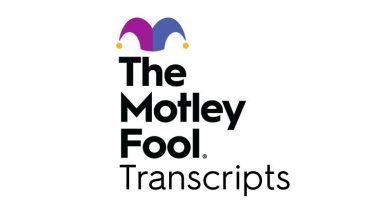4 Ways to Grow $100,000 Into $1 Million for Retirement Savings

[ad_1]
A popular retirement goal is $1 million, and for good reason. According to a recent study from GoBankingRates, $1 million is enough to cover 18.9 years on average of retirement living expenses in the U.S., and in some lower-cost states it could cover even more than that. In Mississippi, for example, it would last nearly 23 years.
Of course, getting to $1 million is the hard part, but if you already have $100,000 saved up, that goal is achievable. Contributing to your retirement account will help it grow faster, but even without extra contributions you can get there. Here are four ways to do it.
1. Buy an S&P 500 index fund
The easiest way to invest is to buy an S&P 500 index fund like the Vanguard S&P 500 Fund or the SPDR S&P 500 ETF.
These funds track the S&P 500, investing in all 503 stocks in the index at a low cost to you. Buying one of these funds is the easiest way to benefit from the long-term growth of the stock market. Historically, the S&P 500 has grown by an average of 9% a year. At that rate, an S&P index fund would turn $100,000 into $1 million after 27 years. If you wanted to retire at 65, you’d have to have $100,000 invested by 38, according to that math. Of course, contributing to your retirement account will help you reach that goal faster. The earlier you start investing, the better.
2. Start a dividend investment plan
One of the best ways to capitalize on the long-term growth potential of the stock market is through dividend stocks. In particular, investing with a dividend reinvestment plan (DRIP) is a great way to maximize the gains from your dividend payments.
Dividend reinvestment uses the dividends you receive to buy more shares of the stock that paid you, thereby accelerating the growth of your portfolio and allowing you to collect even more dividends in the future.
If you want to put together a dividend portfolio, you can do so yourself, choosing dividend growth stocks with a solid track record of performance like Home Depot and McDonald’s, or you could buy a dividend ETF like the Vanguard High Dividend Yield Index Fund ETF, which offers a 3% yield and counts Broadcom, JPMorgan Chase, and ExxonMobil as its top holdings.

Image source: Getty Images.
3. Buy growth stocks
Growth stocks tend to outperform the broad market during bull markets, and with a new bull market kicking off, this could be a great time to buy growth stocks.
Once again, you could put your money into an ETF like the Vanguard Growth Fund, the Invesco QQQ Trust, or the VanEck Semiconductor ETF, which offers exposure to the fast-growing chip sector.
Alternatively, you could put together a group of growth stocks to invest in directly. You could consider “Magnificent Seven” stocks like Nvidia or Meta Platforms.
Investing in growth stocks is generally riskier than investing in the broad market, but growth stocks also have the potential to grow faster, helping you reach your retirement goal sooner.
4. Buy value stocks
Another way to get from $100,000 to $1 million is with value stocks, which are often thought of as the opposite of growth stocks. Value investing means buying stocks for less than their intrinsic value. It’s a favorite strategy of investors like Warren Buffett and Benjamin Graham. Value stocks can protect your portfolio in a downturn, as they tend to be less volatile than growth stocks. In addition, the market puts a premium on value stocks due to their stable underlying businesses that help them outperform their growth counterparts.
Again, you can choose an ETF like the Vanguard Value Index, which counts Berkshire Hathaway, Broadcom, and JPMorgan Chase as its top holdings. You can also invest in individual value stocks. Generally, you’ll want to buy stocks that are trading for less than the S&P 500’s price-to-earnings ratio.
What’s right for you?
You don’t have to pick only one of these strategies. You can mix and match as you see fit or rotate from value to growth, according to your confidence in the health of the stock market.
The best way to ensure you reach your retirement goals is to keep contributing over time, but even without additional contributions, you can grow a $100,000 nest egg into $1 million with enough time.
JPMorgan Chase is an advertising partner of The Ascent, a Motley Fool company. Randi Zuckerberg, a former director of market development and spokeswoman for Facebook and sister to Meta Platforms CEO Mark Zuckerberg, is a member of The Motley Fool’s board of directors. Jeremy Bowman has positions in Broadcom and Meta Platforms. The Motley Fool has positions in and recommends Home Depot, JPMorgan Chase, Meta Platforms, Nvidia, Vanguard Index Funds – Vanguard Growth ETF, Vanguard S&P 500 ETF, and Vanguard Whitehall Funds – Vanguard High Dividend Yield ETF. The Motley Fool recommends Broadcom. The Motley Fool has a disclosure policy.
[ad_2]




